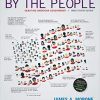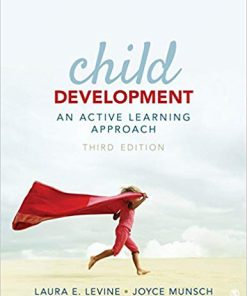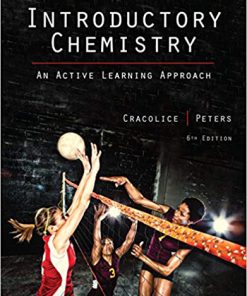(eBook PDF) Introductory Chemistry: An Active Learning Approach 7th Edition
$50.00 Original price was: $50.00.$35.00Current price is: $35.00.
(eBook PDF) Introductory Chemistry: An Active Learning Approach 7th Edition – Instant Download
(eBook PDF) Introductory Chemistry: An Active Learning Approach 7th Edition – Digital Ebook – Instant Delivery Download
Product details:
- ISBN-10 : 0357363663
- ISBN-13 : 978-0357363669
- Author: Mark S. Cracolice, Edward I. Peters
Learn the skills you need to succeed in your chemistry course with INTRODUCTORY CHEMISTRY: AN ACTIVE LEARNING APPROACH, 7th Edition. Known for threaded remediation of topics, this text assumes no prior knowledge of Chemistry. This proven resource will help you every step of the way as you develop the skills you need write routine chemical formulas and equations, set up and solve chemistry problems, think about fundamental chemistry on an atomic or molecular level, and visualize what happens in a chemical change. The text combined with the online resources and instant feedback in OWLv2 sets you on your way to developing a deeper understanding of chemistry concepts and solving complex problems in all aspects of your life.
Table of contents:
1. Introduction to Chemistry; Introduction to Active Learning.
2. Matter and Energy.
3. Measurement and Chemical Calculations.
4. Introduction to Gases.
5. Atomic Theory: The Nuclear Model of the Atom.
6. Chemical Nomenclature.
7. Chemical Formula Relationships.
8. Chemical Reactions.
9. Chemical Change.
10. Quantity Relationships in Chemical Reactions.
11. Atomic Theory: The Quantum Model of the Atom.
12. Chemical Bonding.
13. Structure and Shape.
14. The Ideal Gas Law and Its Applications.
15. Gases, Liquids, and Solids.
16. Solutions.
17. Acid-Base (Proton-Transfer) Reactions.
18. Chemical Equilibrium.
19. Oxidation-Reduction (Redox) Reactions.
20. Nuclear Chemistry.
21. Organic Chemistry.
22. Biochemistry. Appendix I: Chemical Calculations. Appendix II: The SI System of Units. Glossary. Index
People also search:
Introductory Chemistry An Active Learning Approach 7th Edition
Introductory Chemistry An Active Learning Approach 7th Edition pdf
Introductory Chemistry An Active Learning Approach
what is introductory chemistry
characteristics of active learning
introductory approach example











